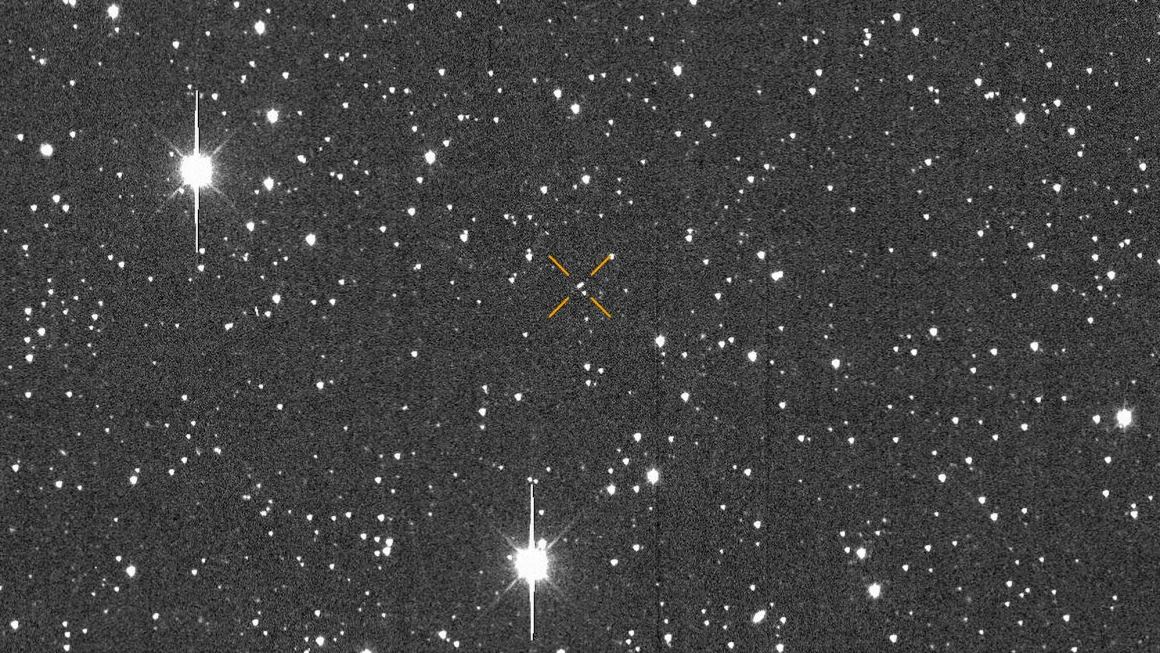The Most Hazardous Asteroid on Record Now Has Almost No Chance of Hitting Earth
Tuesday, February 25, 2025
Asteroid 2024 YR4, previously considered the riskiest asteroid on record, now has an almost zero chance of impacting Earth in 2032, according to NASA and the European Space Agency (ESA).
NASA estimates the asteroid’s likelihood of collision at just 0.0017% in December 2032, while ESA places the risk at 0.002%. This translates to a 1 in 59,000 chance of impact, meaning there is a 99.9983% probability that the asteroid will safely pass by Earth in seven years. Additionally, NASA reports that the asteroid has a 1.7% chance of hitting the Moon, but this poses no risk to Earth.
“When first discovered, asteroid 2024 YR4 had a very small yet notable chance of impacting our planet in 2032,” NASA stated on Monday.
As astronomers continued to submit observations to the Minor Planet Center, experts at NASA’s Jet Propulsion Laboratory refined trajectory models, confirming that the asteroid poses no significant threat to Earth for at least the next century. The latest calculations further reduced uncertainties, shifting its possible location on December 22, 2032, farther from our planet.
Over the weekend, the asteroid’s risk level was downgraded to 0 on the Torino Impact Hazard Scale, which measures potential space object collisions. A ranking of 0 indicates that the likelihood of impact is either nonexistent or so minimal that it is effectively zero.
Asteroid 2024 YR4, first detected on December 27, 2024, is estimated to be between 131 and 295 feet (40–90 meters) wide—comparable to a large building. If it were to collide with Earth, it could cause local devastation. However, its rapid risk reduction is credited to meticulous follow-up observations by astronomers worldwide, said Richard Binzel, inventor of the Torino Scale and a planetary sciences professor at MIT.
“I’m pleasantly surprised we could lower the probability numbers so quickly,” Binzel noted. “We didn’t want to remain in a prolonged period of uncertainty when the chances were always going to drop to zero.”
From High Risk to No Threat
Early last week, asteroid 2024 YR4 briefly held the highest recorded impact probability for a near-Earth object since asteroid Apophis was first observed in 2004.
At its peak, NASA estimated a 3.1% chance of 2024 YR4 hitting Earth in 2032, while ESA’s assessment reached 2.8%. Both figures exceeded the previous record of 2.7% set by Apophis, making YR4 the most concerning asteroid discovery in two decades.
However, as with Apophis, scientists anticipated that the initial risk level would drop as additional data refined the asteroid’s trajectory.
Apophis, measuring 1,148 feet (350 meters) in diameter, once held a 4 out of 10 ranking on the Torino Scale due to its potential for regional destruction. In contrast, 2024 YR4 was assigned a level 3, as its smaller size posed only local hazards. Apophis’ ranking also quickly dropped to 0 after archived observations clarified its orbit, confirming that it would not pose a threat for at least a century.
The biggest challenge in assessing asteroid risks lies in calculating unknown factors such as size and trajectory. In YR4’s case, ground-based telescopes played a key role in reducing uncertainties, with observations from the Canada-France-Hawaii Telescope, the Subaru Telescope, and others helping astronomers refine its path.
“The stable atmospheric conditions above Maunakea allow telescopes to capture exceptionally sharp images,” said David Tholen, an astronomer at the University of Hawaii’s Institute for Astronomy.
Continued Monitoring
The probability of 2024 YR4 impacting Earth has dropped just in time, as its trajectory will soon carry it out of reach of ground-based telescopes. The asteroid will not be visible again until June 2028.
Despite the dramatically reduced risk, astronomers will continue monitoring YR4, with the James Webb Space Telescope set to observe the asteroid in early March to further refine details about its orbit and size.
News You Should See
Trump-Induced Market Turbulence Attracts New Investors to Gold
Thinking About Buying a New Phone? Here’s Why You Shouldn’t Worry About Price Hikes Just Yet
Is Elon Musk’s Political Influence Hurting Tesla’s Sales?
Potomac Crash Exposes the Flaws in Trump’s ‘Government as a Business’ Strategy
Fed Holds Off on Rate Cuts as Trump Unveils New Economic Plans